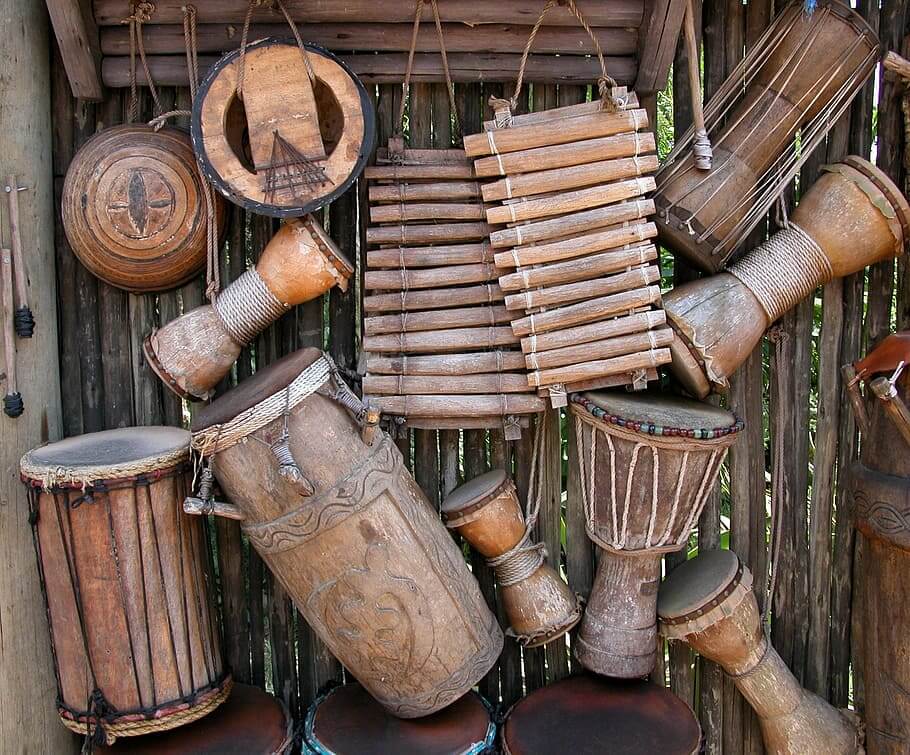Introduction
For thousands of years, music has been a crucial component of human civilization, acting as a tool for expression, dialogue, and the formation of cultural identities. Ancient musical instrument finds provide new insight into the lengthy history of music and the many different cultures that have coexisted throughout time.
In this article, we explore the intriguing world of the oldest musical instruments, tracing their historical development and learning about the sounds that reverberated throughout prehistoric societies.

8 Oldest Musical Instruments
The Divje Babe (Neanderthal) Flute
The Divje Babe Flute is one of the oldest musical instruments ever discovered, with an estimated age of 43,000 years. This artifact, which was found in a cave in Slovenia, is constructed out of a cave bear’s femur bone and has four precisely positioned finger holes. Scientists have replicated its sounds, which are similar to those of a diatonic scale flute, despite the fact that its history as a musical instrument is still up for debate.
The Bullroarer is a straightforward yet effective musical instrument that, when swung through the air, emits a distinct humming or roaring sound and is used by indigenous civilizations all over the world. The age of this instrument is inferred from archeological data to be at least 20,000 years old. Due to the widespread belief that its music might convey spiritual messages or call upon supernatural forces, it was an important component of ancient rites and festivities.
Around 4,500 years ago, ancient Mesopotamia (present-day Iraq) gave birth to the lyre, a stringed instrument with a soundbox and strings draped across it. Beautiful lyres from the Sumerian city of Ur, which are pictured on ancient objects and described in cuneiform literature, have been discovered through excavations. These lyres are thought to be the predecessors of contemporary string instruments and had a significant influence on later civilizations.
Music was highly regarded by the ancient Egyptians, who believed it to have spiritual importance. At least 3,500 years ago, harps were among the most widely used instruments in ancient Egypt. Because of their significance in religious ceremonies and amusement, these harps were lavishly ornamented and frequently included in tomb paintings.
Around 3,500 years ago, during the Bronze Age, the bianzhong, often referred to as chime bells, first appeared in China. These historic bells, which were cast in bronze and came in sets of various sizes and pitches, were created in the past. The bianzhong, which were seen as a sign of social prestige and authority in ancient Chinese ceremonial music, were important instruments.
The Sistrum is one of the oldest rattles that humans are aware of, having its origins in ancient Egypt approximately 3,100 BCE. It was made of a U-shaped metal frame with crossbars and hanging rings or disks of metal that jingled when moved. In Egyptian mythology, the Sistrum was of great religious significance, and it was thought that its peculiar sound could pacify the gods and keep off evil spirits.
Around 2,500 years ago, the aulos, a wind instrument, first appeared in Greece. Circular breathing was used to play this double-reed instrument, which resulted in a distinctive sound that came to be associated with Greek music. The aulos was of tremendous cultural significance and was frequently depicted in plays and myths.
For more than 700 years, Indian traditional music has used the sitar, a plucked string instrument with a long neck and a resonating gourd. The Persian lute, which was introduced to the Indian subcontinent in the 13th century, is thought to be its ancestor. The sitar is a legendary instrument in the Hindustani classical music tradition because of its distinctive timbre and adaptability.
In summary, learning about the first musical instruments gives us a window into our ancestors’ rich musical legacy. From the bone flutes of Neanderthals to the majestic sitar of India, these ancient instruments have shaped cultures, captured emotions, and transcended time. By appreciating and preserving these musical artifacts, we gain a deeper understanding of our shared human experience and the universal language of music.
FAQs
What is the world’s oldest musical instrument?
The Neanderthal flute is the oldest known musical instrument, dating back around 43,000 years. This flute was made from a bird’s bones and is regarded as one of the first examples of humans producing music.
What are some examples of ancient musical instruments?
Examples include Sumerian lyres, ancient Egyptian harps, Greek auloi (double-reeded instruments), Chinese bone flutes, and numerous percussion instruments such as drums and rattles from diverse cultures.
What materials were used to create these ancient instruments?
The materials used to create these ancient instruments varied but commonly included bone, ivory, and occasionally materials like wood or clay.
How were ancient musical instruments discovered?
Archaeological digs frequently lead to the discovery of ancient musical instruments. These artefacts are commonly discovered in burial sites, caves, and other preserved environments. Additionally, portrayals of musical instruments in ancient art and manuscripts help us grasp their presence.
Are ancient musical instruments still playable today?
In some instances, yes. While many old instruments are too delicate or have deteriorated to perform, replicas have been built, allowing modern musicians to replicate historical sounds. However, this procedure necessitates substantial research and experience.

